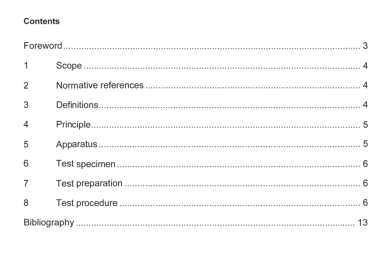BS EN 12153:2000 – Curtain walling – Air permeability – Test method

For custom designed curtain walls or special elements, the specimen shall be a size which is adequate to demonstrate its compliance with the specified requirements.
All parts of the specimen shall be full size, using the same materials, details, methods o construction and fxing as intended for use in the works. Conditions for connection to the structural support shall simulate those in the works as accurately as possible (see also 5.1).
This standard does not apply to the perimeter joints between the curtain walling and the test chamber, or to the joints between the curtain walling and the building construction.
7 Test preparation
Build the test specimen into the test chamber.
Fix true to the nomal atitude of use in both directions, level, square and without visible twist or bend as a result of the aplication of fixing devices.
Remove all transport blocks, bracings or packings and protective wrappings.
Tape all openable joints to prevent air ifltation.
Tape seal any ventilation devices, where these may occur.
Ensure any leakage through all points, including frame joints, is readily detectable.
Ensure all joints between the test specimen and the test chamber are sealed.
Ensure the specimen is clean prior to commencing the test sequence.
8 Test procedure
For cassification, select the maximum test pressure (Pna) according to prEN 12152.1999.
Apply test pressures, throughout the fllwing procedures, in increments of 50 Pa up to 300 Pa
and increments of 150 Pa up to the maximum test pressure (Figure 3).
Determine the air permeability (Q) of the test chamber only, excluding the efect of the test specimen.
NOTE: If this is already known from previous tests, 8.1 is carried out.
Seal the specimen airtight to isolate it from the test chamber.
Apply 3 pulses of positive pressure equal to 500 Pa or 10 % greater than the maximum test pressure (PMma),. whichever is greater. The maximum pressure for each pulse should be reached in not less than 1 s and it should be maintained for not less than 3 s.
Apply test pressures, for not less than 10 s each, in the same sequence as will be used on the test specimen and measure the airflow into the test chamber at each test pressure.
When the specimen is to be tested under negative test pressures, measure the air permeability of the test chamber, as above, under the appropriate negative test pressures.
Remove the airtight seal from the test specimen.
Ensure all openable joints are sealed with tape to make them airtight.
8.1 Positive pressure test: Fixed elements
Apply 3 pulses of positive pressure equal to 500 Pa or 10 % greater than the maximum test pressure (Pma), whichever is greater. The maximum pressure for each pulse should be reached in not less than 1 s and it should be maintained for not less than 3 s.
Apply positve test pressures, for not less than 10 s each, in the appropriate sequence up to the selected maximum test pressure (Pmax) and measure the airflow (Q%) into the test chamber at eachtest pressure.
8.2 Negative pressure test: Fixed elements
Perform this test only when speifially required.
Repeat the entire procedure according to 8.1 using negative test pressure.
8.3 Pressure test: Total specimen
Remove tape from openable joints.
Open and cdlose all openable windows 5 times and fnally secure them in the closed position.
Proceed as in 8.1 (and 8.2 if required) and measure the airflow (Qu) into the test chamber at each test pressure.
BS EN 12153:2000 – Curtain walling – Air permeability – Test method